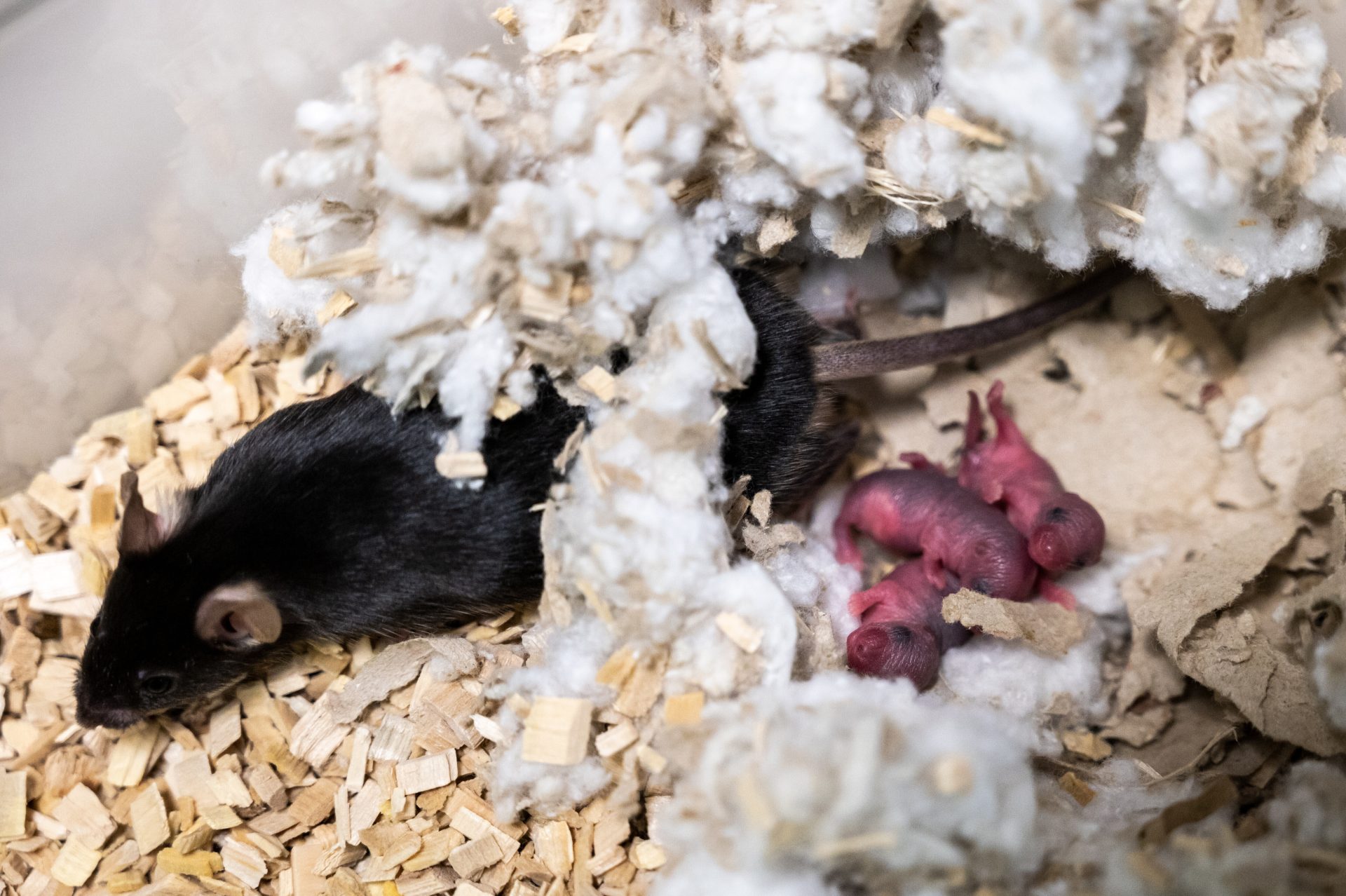
MADRID, SPAIN - 2021/02/16: A mouse with its recently born babies in the Animal Facility of The Center for Biological Research Margarita Salas (CIB-CSIC). The Animal Facility is designed to house mainly experimental animal species like mice and rabbits required for the different research lines carried out by scientists. The Center for Biological Research collaborates through a range of diverse initiatives to combat the SARS-CoV-2 coronavirus, the cause of the COVID-19 pandemic. (Photo by Marcos del Mazo/LightRocket via Getty Images)
A recent study details how scientists created baby mice using cells from two males. It’s the first time researchers have accomplished such a feat. Nature, a British scientific journal, published the study on Wednesday (March 15).
AP reports that researchers began by obtaining skin cells from the tails of two male mice. Afterward, they transformed those cells into “induced pluripotent stem cells,” or iPSC. Of course, there are also human iPSC, which can be derived from skin or blood cells like mice. According to the UCLA Broad Stem Cell Research Center, these cells can produce “an unlimited source of any type of human cell needed for therapeutic purposes.”
After transforming the skin cells from the mice, researchers converted them from male mouse stem cells into female cells. That process involved growing the iPSC and treating them with a drug. The result was functional egg cells.
Their next step was fertilizing the eggs and implanting the embryos into female mice. Unfortunately, out of 630 embryos, only seven grew into mouse pups. This means only one percent of the embryos developed and survived birth.
Last week, research leader Katsuhiko Hayashi told colleagues the surviving mouse pups had no abnormal growth issues. Additionally, those pups later became parents through normal channels, which plainly said means mice having sex. Hayashi provided the update to scientific colleagues at the Third International Summit on Human Genome Editing.
Though the study is an accomplishment among researchers in this field, others worry about the lasting impact. Diana Laird is a stem cell and reproductive expert at the University of California in San Francisco. According to AP, she called the study “an important step in both stem cell and reproductive biology.”
But in a published commentary, Laird and her colleague Jonathan Bayerl warned about the inefficiency of the technique. As mentioned, only one percent of the embryos reportedly developed into pups and survived long enough to become parents. Laird and Bayerl said the survival rate could be pinned on technical or biological reasons, but that remains unclear.
Nonetheless, the colleagues also highlighted positives, including the possibility of reproducing endangered mammals using cells from one male.
“And it might even provide a template for enabling more people to have biological children while circumventing the ethical and legal issues of donor eggs,” Laird and Bayerl said in their commentary published alongside the study.
At this time, there’s not enough research to indicate the same technique or protocols could be effective with human stem cells.